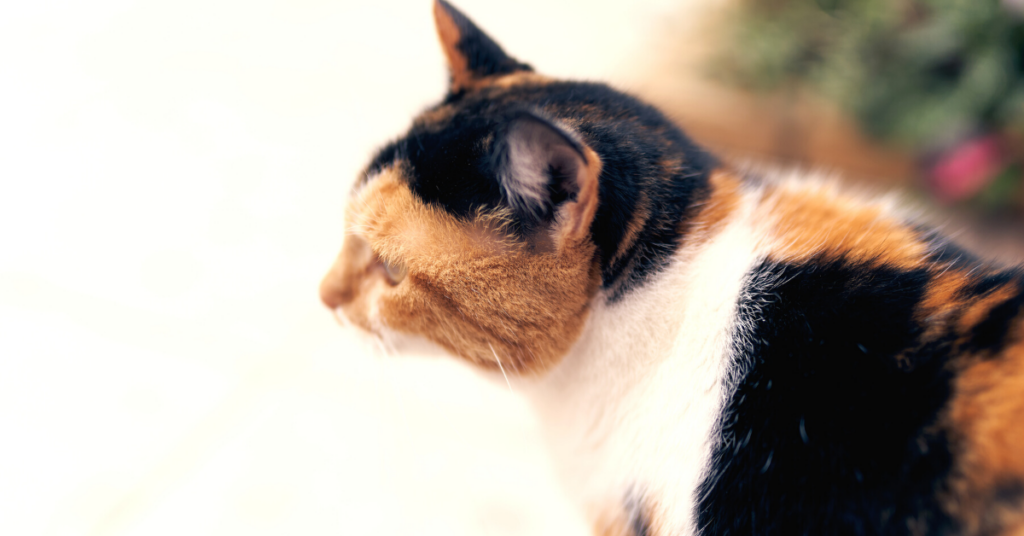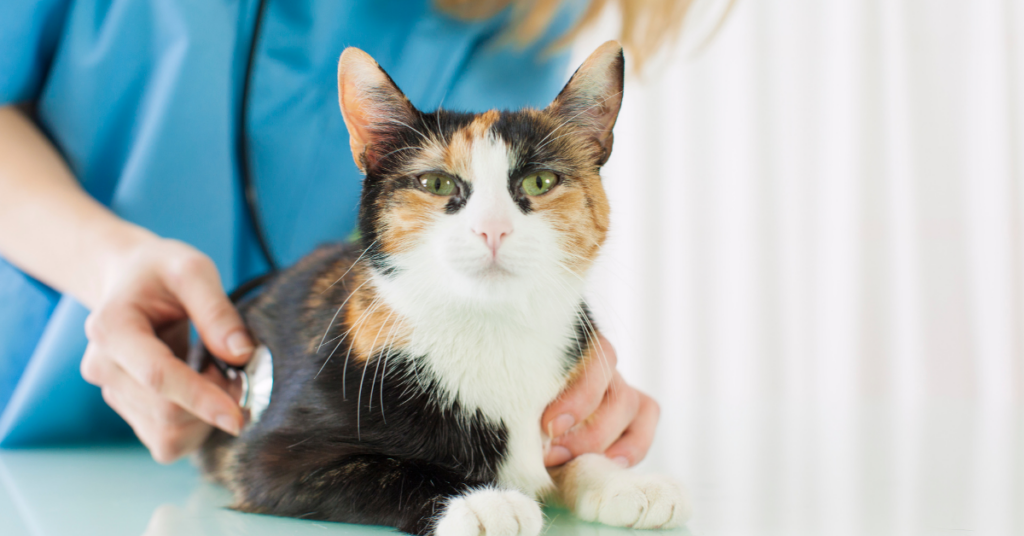Upper Respiratory Infection in Cats
Upper respiratory infection in cats is common. It’s similar to cold or flu.
However, it can be very serious, and in some cases, life threatening.
It’s caused by different viruses or bacteria, and it targets the upper respiratory system including the nose, throat, and sinuses, rather than the lungs themselves.
Cats who are very young, very old, or who have weak immune systems, are more likely to develop severe respiratory disease, and may die as a result of secondary infections.
So let’s find out more about upper respiratory infection in cats…
What is Feline Upper Respiratory Infection in Cats?

Feline upper respiratory infection (URI), is a respiratory infection caused by viral infection or bacteria. The most common viruses that cause this infection are Feline Herpesvirus Type-1 (also known as feline viral rhinotracheitis or FVR) and Feline Calicivirus (FCV).
These two viruses are known to be responsible for more than 90% of URI cases in cats. Feline herpesvirus is related to the virus that causes chickenpox and cold sores in humans. However, cats can’t give it to their owners.
Most cats that catch feline herpesvirus will carry it for the rest of their lives, and they may be able to spread it even if they don’t show any signs. For example, a mother cat can transfer the virus to her kittens.
The most common bacteria that cause URI are Bordetella bronchiseptica, which may cause sneezing, nasal discharge and sometimes coughing, and is usually linked with stress and overcrowded living conditions, and It’s more common in dogs.
Chlamydophila felis bacteria is also a cause of URI, and is a cause of ocular disease or conjunctivitis. In addition, fungus can be a cause of URI, by being exposed to bird poop and dying plants.
Finally, viruses in cats are found in their tears, nasal discharge, and saliva. They can spread easily by direct contact. Viruses can also live on surfaces like food and water bowls, or litter boxes.
Pet owners can spread these viruses from one cat to the other with infected hands or clothes.
Signs of Feline URI

When a cat is infected with FCV or FHV viruses, the incubation period that follows is usually 2-10 days. Common signs will include:
- Sneezing
- Nasal discharge & nasal congestion
- Runny nose
- Decreased appetite
- Eyes discharge
- Lethargy
- Fever
Signs severity is variable. Usually, Feline Herpesvirus tends to be more severe, and causes eye infection, and cornea ulcer. In severe cases, it can cause anorexia, an inflammation in the trachea.
Feline Calicivirus can be milder with less severe signs. However, it can cause ulcers in the mouth, and arthritis or “limping syndrome”, which is more common in young cats. It can also cause severe viral pneumonia for little kittens.
Upper Respiratory Infection in Cats Risk factors

Upper respiratory infections in cats are common in these cases:
- Cats who live in crowded living conditions, like shelters, or breeding facilities, or multi cat households.
- Cat age plays a role in getting an infection: senior cats and kittens are more likely to get infected
- Weak immune system. Cats that have feline leukemia or feline immunodeficiency virus are more likely to get URI
- Stress
- Certain breeds of cats such as Persian, and flat faced breeds are more prone to getting upper respiratory infections because of their facial structure.
- Being outside for long periods of time can increase the risk of getting URI, because they can be in contact with other infected cats, and fungi.
How is Feline URI Diagnosed?

If you suspect your cat has URI, take him/her to the vet to help in the diagnostic testing of URI. The diagnosis is usually based on analysing the clinical signs, and ruling out other causes.
Your vet will collect mouth or eye swabs to be tested, to diagnose FCV or FHV viruses. The virus can be identified through culturing or by a PCR test.
In addition, blood tests, electrolyte test, and X-rays may be performed, if your cat has recurring infections. Chest X-ray may be required. It can also help diagnose a fungal infection.
How are Upper Respiratory Infection in Cats Treated?

Treatment of Feline URI would include medication, isolation, rest, and IV fluids, and nutritional support. If a cat has a secondary bacterial infection, the vet may antibiotics, to treat secondary bacterial infections.
Your vet may recommend steam inhalation or nebulisation, if nasal congestion is severe and breathing is difficult, to liquify discharges, and release them easily by sneezing.
Cats with URI usually lose appetite, and it may develop into anorexia. If anorexia is severe, the vet may suggest hospitalisation to provide food through a tube.
Intravenous fluids may also be needed to avoid dehydration. To help manage ocular disease linked with FHV virus, there are a couple of topical antiviral agents.
To treat severe FHV infection in cats, a drug called “famciclovir” used to treat human herpes virus infections, has been used for cats too. It has been shown to be safe and effective when given orally.
Typically, feline URI is treated symptomatically at home. While the cat recovers, make sure to provide a comfortable and a private place for her to rest.
Cats with URI often lose appetite and smell, so try to encourage her to eat with smelly treats like fish in oil, or soft kitten foods that are gently warmed.
Clean any nasal or eyes discharge, and finally use medications as recommended by your vet.
If URI is left untreated, some infections can develop to pneumonia or have other serious complications, like blindness, chronic breathing problems, or recurrent nasal discharge.
How to Prevent Feline URI?

You can prevent your cat from getting feline URI by keeping up to date with vaccines recommended by your vet. Vaccines can make the infections less severe but not prevent them.
Keep your cat indoors as much as possible, to lower the risk of exposure to infected cats. Avoid anything that causes stress for your cat.
Wash your hands thoroughly when handling more than one cat, to prevent transferring infections.
Finally, regular visits to the vet will help diagnose infections early and prevent them.
When to See a Veterinarian

If you notice signs of a cold or flu on your cat, it’s better to visit your veterinarian, to help diagnose and identify the infection, in order to treat it as early as possible, and to advise you on what should be done at home.
In fact, most cats that recover from infection with URI viruses will become ‘carriers’, and continue to shed the virus for a period of weeks or months after infection.
However, many cats will eventually defeat the virus within a few months.







